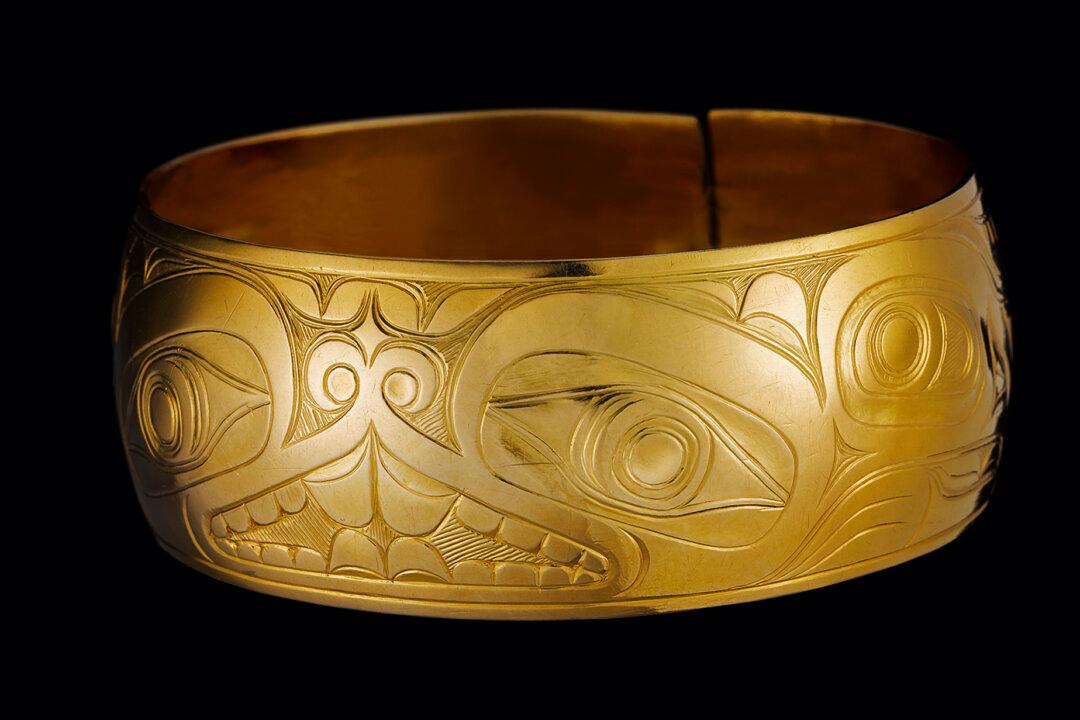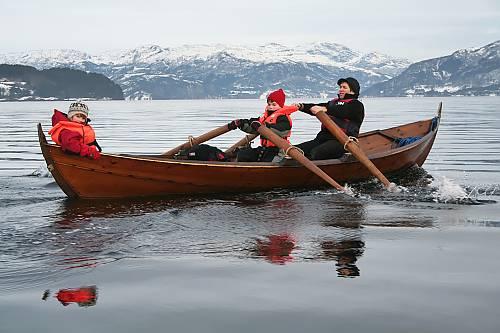OTTAWA—Glimpses of the supernatural world are what make the current exhibition of the work of iconic Haida artist Charles Edenshaw (1829-1920) so fascinating. On display at the National Gallery of Canada until May 25, the exhibit presents a wide range of objects that Edenshaw created during his lifetime.
Visitors will see everything from traditional objects Edenshaw made for his family, to elaborately carved model totem poles, platters, spoons, bracelets, and other objects made for trade with Europeans. Most represent an unbroken thread of artistry stemming from thousands of years of West Coast culture that survived smallpox epidemics, the arrival of missionaries, and other post-contact upheavals.
“Edenshaw left a legacy through his work and we are blessed that he committed his whole life to creating art for us to enjoy and study,” says chief curator Robert Davidson.
Davidson adds that the magic of Edenshaw’s work “embodies millennia of development of Haida art” and that one “can relearn the magic and integrity of the history of the art form by studying his work.”
The exhibition focuses on four predominant themes: Edenshaw’s advancement of traditional formline design; his ability to animate cultural stories in his carving; his interest in new materials and visual ideas; and his deep-seated belief in Haida traditions which gave him the “agility and fortitude to thrive as a Haida artist during oppressive colonial rule.”
Mask-making was an important activity by the time the Europeans arrived. It was a recognized specialty and the artists worked with tools fitted with blades of stone or shell.
However, James Hart, a Haida adviser and descendant of Edenshaw, says that when metal objects washed up on shores having come all the way from Japan, the artists used them as carving tools.
Once metal tools were introduced by fur traders, the artists were able to work at greater speed and produce more pieces, although the style remained basically unchanged.
In the post-contact period, commercial paints replaced some of the old natural dyes and pigments, but the traditional colour selection remained the same. The old colours were red ochre for red, charcoal for black, clam shells for white, and copper oxide for blue-green. These materials were mixed with an oily base of salmon roe or other fish eggs squeezed through a cedar bark sack.
Fine, realistic portrait masks were the specialty of the Haida, Tlingit, and Tsimshian in the northern area. Today, many native craftsmen create art objects in the Northwest Coast style. Many of these are comparable in design and execution to the pieces collected by museums around the world.
The exhibit is on display at the National Gallery of Canada until May 25. For more information, visit: www.gallery.ca.
Susan Hallett is an award-winning writer and editor who has written for The Beaver, The Globe & Mail, Wine Tidings and Doctor’s Review, among others. Email: [email protected]





